#aem dispatcher
Explore tagged Tumblr posts
Text
0 notes
Text
In today’s accelerating transportation and logistics sector, operational efficiency and streamlined processes are paramount. Avaal Technology rises to the occasion by offering comprehensive truck dispatch software solutions and more, cementing its position as a valuable ally for the transport industry. With over 20 years of experience, Avaal provides an all-in-one platform encompassing trucking dispatch, fleet management, safety and compliance, and accounting aimed at enhancing operational efficiency and real-time tracking for carriers, freight brokers, and freight forwarders.
Avaal’s truck dispatcher software not only facilitates efficient route planning and live tracking but also integrates vital features such as driver settlements, invoicing, and freight tracking, making it a contender for the best trucking dispatch software solution in the market. Its commitment to innovation is further highlighted by its cloud based TMS software options and mobile app support, ensuring accessibility and seamless management for users on the go. With Avaal’s solutions, businesses are equipped to achieve peak performance, propelled by Avaal’s expertise in training, consulting, and cutting-edge software tailored to the modern demands of the transportation industry.
Key Features of Avaal’s Truck Management Software
Comprehensive Software Suites
Avaal offers a robust array of software solutions tailored for the transportation industry. The AFM Suite, designed to meet for automating critical business processes, includes features for ACE/ACI e-Manifest submissions essential for efficient cross-border transportation. Additionally, the AEM Suite enhances operational efficiency by streamlining order and customer management system. AFN Connect links freight carriers, brokers, and shippers for networking and collaboration to optimize load matches and reduce empty miles. One of the most time taking operational work is of manual data entry into their Tms which is automatically extracting the data from documents etc.
Mobile Application Integration
To ensure accessibility and convenience, Avaal provides mobile applications like AFM Driver and AEM Driver Apps. These apps extend the capabilities of Avaal’s software suites to mobile platforms, allowing users to manage transportation workflows effectively from anywhere.
Diverse Software Offerings
Avaal’s product lineup includes the AFM Suite, AED Suite, and Avaal Freight Network (AFN) Connect. These products offer seamless integration, user-friendly interfaces, and 24/7 support, making them highly effective for modern transportation.
Advanced Truck Management System (TMS)
Avaal Technology’s TMS integrates tools and features that facilitate the planning, execution, and optimization of trucking business operations. This system provides:
A unified interface for managing all aspects of the transportation workflow.
Enhancing visibility into the supply chain.
Improving delivery timelines.
Customization and Automation
The AVAAL Freight Management Suite offers features like automation, customization, and integration with major third-party providers. It supports multi-company management and provides a multi-version platform suitable for various transportation needs such as dispatch, brokerage, and auto hauler.
Desktop and Cloud-Based Solutions
Avaal provides both desktop-based and cloud-based TMS solutions. AVAAL Express Dispatch, a desktop-based TMS option, along with the cloud-based AFM Suite, offers robust automation and customization capabilities. These platforms are designed to cater to asset based carriers, freight brokers, and freight forwarders, enhancing freight accounting, auditing, and tracking.
Enhanced Security and Efficiency
Avaal’s truck dispatch software simplifies compliance with local regulations and offers real-time tracking of trucks and freight. It also streamlines accounting processes and improves order management, saves time and money while enhancing security and accuracy compared to traditional methods.
Integrated Accounting Features
The software includes a seamlessly integrated accounting system developed specifically for trucking & freight forwarding companies. This system facilitates time savings, improves customer relationship management and customer service, and addresses the specific financial management needs of the trucking industry. Additionally, it integrates with QuickBooks for efficient synchronization of financial transactions.
Paperless Operations and Real-Time Tracking
Avaal’s trucking software supports paperless operations and provides features for real-time tracking, simplified invoicing, and payroll management. This leads to streamlined order management and dispatch process & operations, ensuring compliance with regulations, and enhancing overall operational efficiency.
The Role of Avaal Technology in Enhancing Logistics and Transportation
Avaal Technology Solutions stands out as a pivotal force in revolutionizing logistics and transportation management. Known for its innovative logistics solutions, Avaal optimizes operations and significantly boosts profitability for businesses involved in freight management. The company’s approach not only enhances operational efficiency but also appeals to a broad spectrum of logistics stakeholders, from managers to truck drivers, by increasing profit margins and streamlining processes.
Sustainability and Innovation
A crucial aspect of Avaal’s innovation is its dedication to sustainability, mainly through initiatives to reduce empty miles, thereby contributing to environmental conservation. This commitment positions Avaal as a forward-thinking leader in the logistics sector, ready to meet future challenges and opportunities.
Enhancing User Experience
Avaal’s technology blends advanced technical sophistication with a user-centric design. This combination ensures that all users, regardless of their tech expertise, find the software intuitive and capable of meeting the rigorous demands of the logistics industry. Testimonials from industry users’ further evidence the positive user experience. Essi Torabi from Silver Start Transportation remarks on the efficiency improvements seen with Avaal Express software, noting significant operational enhancements. Similarly, Binny from Speed X Logistics highlights the exceptional support provided by Avaal’s dedicated team.
Operational Improvements and Professional Branding
Avaal not only assists in streamlining operations but also aids businesses in expanding through the acquisition of necessary permits and certifications. Additionally, it offers customized corporate branding solutions that enhance businesses’ professional image. Satwant Singh of Silver Start Transportation praises the software for its performance and its comfort to their accounting department.
By integrating these elements, Avaal Technology Solutions redefines the standards of efficiency and profitability in the logistics and transportation industry, ensuring businesses are well-equipped to thrive in a competitive market.
Integration Capabilities with Third-Party Providers
Avaal’s truck dispatch software stands out for its robust integration capabilities with various third-party providers, ensuring a seamless and efficient operational experience. Here are some key integration features:
Core System Integration: Avaal’s CORE system allows integration with API-enabled third-party providers, enhancing flexibility and connectivity across various platforms.
Electronic Logging Device Compatibility: The software supports integration with popular ELDs like Samsara, which are crucial for compliance and fleet performance and management.
Comprehensive Mobile App Integration: Avaal integrates with its own mobile applications and major third-party providers, offering a complete real time solution that caters to diverse transportation and logistics needs.
Creating API Tokens for Integration: Specific API tokens are required for integration with Samsara, and detailed instructions are available in the Samsara API documentation. This process involves creating a token with granular scopes and sending it to an Avaal representative to enable the integration.
Support and Configuration Assistance: Once the API token is created and submitted, Avaal’s support team assists with the configuration and guides users through the necessary steps to activate the integration, ensuring a smooth setup process.
Extended Integration with Avaal Express: Avaal Express supports third-party integrations with various applications, including PC Miler, Avaal eManifest, EDI, Loadboard, Customer Portal/App, and QuickBooks, enhancing the software’s utility and adaptability.
Customization for Various Business Sizes: Avaal’s eManifest software, which facilitates compliance for U.S.-Canada border crossings, is customizable to meet the needs of different trucking companies, from single operators to multinational corporations.
Through these integrations, Avaal not only simplifies the management of transportation and logistics operations but also ensures that businesses can leverage the best tools in the industry to enhance their operational efficiency and compliance.
User Experience and Support
Avaal’s dedication to providing a seamless user experience is evident through its comprehensive support system and user-friendly software design. Customers satisfaction & benefit from 24/7 access to support via phone and chat, ensuring that help is always just a call or click away. The software’s intuitive interface is complemented by various support options tailored to enhance user interaction and satisfaction.
Comprehensive Support Options
Avaal offers a robust support system that includes:
24/7 Phone and Chat Support: Users can contact the support team at any time for assistance with software integration, troubleshooting, or general queries.
Email and Help Desk: For less immediate concerns, users can email Avaal at [email protected] or utilize the help desk for detailed support.
Knowledge Base and FAQs: A well-organized knowledge base and frequently asked questions (FAQs) section provides users with quick answers to common issues and guidance on using the software effectively.
Training and Educational Resources
Avaal is committed to enhancing the industry knowledge of its users through:
Specialized Training Courses: Offering courses in Trucking Dispatch, Safety & Compliance, and Transportation of Dangerous Goods, available in multiple locations and online.
Customizable Learning Options: Courses are scheduled for weekdays and weekends, accommodating the diverse availability of participants.
Consulting and Additional Services
In addition to software solutions, Avaal provides valuable consulting services:
Trucking Authorities and Certification: Assistance with obtaining necessary certifications and authorities for trucking operations.
Corporate Branding and Customs Bonds: Services include help with corporate branding and securing customs bonds, which are essential for cross-border operations.
By integrating these elements, Avaal ensures that every user has access to top-tier software solutions and receives the support and resources needed to optimize their operational efficiency and compliance.
Pricing and Subscription Models
Avaal Truck Dispatch Software offers flexible subscription models tailored to meet the needs of businesses of various sizes, from freelancers to mid-size and small businesses. Here are the detailed pricing and subscription options:
Subscription Flexibility
Avaal provides options for both monthly and annual subscriptions, catering to different business requirements and budget constraints.
Pricing Details
Avaal Express Trucking Management Software:
Monthly Subscription: Starts at USD 99 (CAD 150).
Annual Subscription: Contact Avaal directly for yearly pricing options.
Free Trial: Available to help businesses evaluate the software before committing long-term.
Business Size Suitability
Freelancers: Avaal Express is designed to accommodate the operational needs of independent truckers and small operators.
Mid-Size Business: Offers features that help manage more complex logistics and dispatch operations.
Small Business: Tailored features that simplify small-scale businesses’ dispatch, expenses, and communication operations.
Contact for Custom Quotes
For businesses interested in custom solutions or those needing more specific information on pricing, Avaal encourages direct contact to discuss tailored subscription plans and pricing.
Desktop and Cloud-Based Options
Avaal Desktop Based Freight Management Software (AED): Available with options for both monthly and annual subscriptions, providing flexibility in software deployment based on business needs.
Conclusion
Throughout this exploration of Avaal’s truck dispatch software, we’ve witnessed an extensive showcase of how such technology can revolutionize efficiency, compliance, and overall operational effectiveness within the transportation and logistics sector. By integrating crucial features like efficient route planning, real-time tracking, mobile app integration, and comprehensive support for third-party integration, Avaal positions itself as an indispensable tool for businesses aiming to navigate the complexities of modern-day logistics. Its relentless focus on customization, automation, and user experience enhancement further underscores its commitment to meeting the diverse needs of its clientele, from independent operators to multinational enterprises.
Moving forward, the role of Avaal Technology in simplifying logistics operations, reducing operational costs, and driving sustainability initiatives cannot be overstated. The broad implications of these advancements promise not only to elevate the standards of logistical operations but also to pave the way for more sustainable and efficient practices in the industry. As businesses seek solutions that provide a competitive edge, Avaal’s continuous innovation and dedication to user support offer a clear pathway to achieving operational excellence. For stakeholders in the transportation industry, Avaal’s logistics software is not just a tool but a strategic partner in the pursuit of optimization and growth.
FAQs
Q: What is the most recommended course for truck dispatch training?
A: Avaal Technology Solutions is recognized as the premier provider of Truck Dispatcher Training Courses in North America.
Q: Can you describe Avaal Express?
A: Avaal Express is an all-encompassing trucking management software that integrates features such as dispatching, fleet management (mid-size, small-size, large size) driver management, safety and compliance (Bill of lading, shipping documents), and accounting into a single, user-friendly platform. Avaal Express offers various versions to fit the diverse needs and requirements of its users precisely.
Checkout Our Courses:
Truck Dispatch Training In California
TMS
Consulting
Fuel Card
#truckdispatchercourse#truckdispatchingcourse#trucking company#truckingdispatchcourse#avaal#truckingindustry#trucking#california#tms
0 notes
Text
Mastering Digital Experiences: Adobe Experience Manager Implementation Guide
In today's fast-paced and highly competitive business landscape, digital experiences play a crucial role in shaping the success of businesses. With the increasing shift towards online interactions and transactions, businesses are constantly seeking ways to enhance their digital presence and engage their audience effectively.
Adobe Experience Manager Implementation emerges as a powerful and versatile tool for managing digital content, offering a comprehensive solution for businesses looking to streamline their content management and delivery processes.
Understanding Adobe Experience Manager (AEM)
Adobe Experience Manager Implementation stands as a leading digital experience management solution that empowers businesses to create, manage, and optimize digital customer experiences across various channels.
Its key features and capabilities are designed to offer a seamless and integrated approach to content management, digital asset management, and personalization. AEM's robust capabilities enable businesses to deliver compelling digital experiences that are both engaging and impactful.
AEM facilitates streamlined content management and delivery processes, allowing businesses to efficiently create, manage, and deliver content across various digital channels. It provides a unified platform for content creation, editing, and publishing, thereby enabling businesses to maintain consistency and coherence in their digital messaging.

Planning for AEM Implementation
Embarking on an AEM implementation requires thorough planning and preparation to ensure the successful adoption and integration of the platform within an organization. The process involves assessing organizational needs, defining implementation goals, and establishing a clear roadmap for the implementation journey.
To prepare for an AEM implementation, it is essential to conduct a comprehensive analysis of the organization's existing digital infrastructure and content management practices. This evaluation will provide valuable insights into the specific requirements and challenges that need to be addressed through the AEM implementation.
Setting realistic and achievable implementation goals is crucial for aligning the AEM implementation with the broader strategic objectives of the organization. By defining clear goals, businesses can effectively measure the success of the implementation and track the impact of AEM on their digital experiences.
Setting Up AEM Environment
Setting up a robust and efficient AEM environment entails understanding the technical prerequisites and best practices for configuring AEM to meet the specific needs of an organization. The technical requirements for AEM implementation encompass considerations related to infrastructure, performance, security, and scalability.
Establishing the AEM environment involves deploying the necessary infrastructure, including servers, databases, and network configurations, to support the seamless operation of AEM. It is essential to adhere to best practices in configuring AEM to ensure optimal performance and reliable operation.
In addition to deploying the necessary infrastructure, establishing an Adobe Experience Manager (AEM) environment involves several key steps to ensure a smooth and efficient setup. One crucial aspect is selecting an appropriate deployment topology based on the specific requirements of the organization. AEM supports various deployment scenarios, such as author and publish instances, as well as a dispatcher for content delivery. Careful consideration of the organization's needs and traffic patterns is essential for determining the optimal topology.
Content Authoring and Management in AEM
AEM offers a comprehensive set of tools and features for content authoring and management, empowering businesses to create and manage digital content effectively. The platform's intuitive user interface and robust authoring capabilities enable content creators to craft engaging and compelling content for diverse digital channels.
Effective content management within the AEM platform involves establishing structured workflows, version control mechanisms, and content governance practices. These elements are essential for maintaining the quality, consistency, and relevance of digital content across various touchpoints.
Structured workflows play a crucial role in effective content management within the Adobe Experience Manager (AEM) platform. These workflows define the sequence of tasks and activities that content goes through, from creation to publication. By establishing clear and well-defined workflows, organizations can ensure that content creation, review, approval, and publishing processes are streamlined and efficient. This not only improves productivity but also minimizes the chances of errors and inconsistencies in the content development lifecycle.
Customizing User Experiences with AEM
Personalizing and customizing user experiences is a key aspect of mastering digital experiences, and AEM provides a rich set of tools and features to achieve this objective. Businesses can leverage AEM's capabilities to create personalized and engaging user experiences that resonate with their target audience.
AEM offers robust capabilities for segmenting audiences, delivering targeted content, and analyzing user interactions to optimize the digital experience. By harnessing these features, businesses can tailor their digital experiences to meet the specific needs and preferences of their audience, thereby enhancing engagement and loyalty.
Optimizing Performance and Scalability of AEM
Ensuring the performance and scalability of an AEM implementation is critical for delivering seamless digital experiences, especially in high-traffic scenarios. Optimizing the performance of AEM involves implementing best practices for caching, load balancing, and content delivery to minimize latency and enhance responsiveness.
Scalability considerations revolve around the ability of the AEM environment to accommodate growing volumes of traffic and content without compromising performance. By implementing scalable architectures and performance optimization strategies, businesses can ensure that their digital experiences remain robust and reliable under increasing demand.
One key aspect of scalability in the Adobe Experience Manager (AEM) environment is the architecture itself. A well-designed architecture provides the foundation for scalability by allowing the system to distribute and handle workloads efficiently. This involves considerations such as load balancing, distribution of resources, and the ability to horizontally scale by adding more servers or nodes to the environment.
Load balancing plays a crucial role in distributing incoming traffic across multiple servers, ensuring that no single server bears an excessive load. This prevents bottlenecks and enhances the system's overall ability to handle increasing volumes of requests. AEM implementations often leverage load balancing technologies to achieve optimal distribution and maintain performance during peak traffic times.
In addition to architectural considerations, performance optimization strategies are essential for achieving and maintaining scalability. This involves fine-tuning various components of the AEM environment, including code, databases, and caching mechanisms. Efficient code practices, database indexing, and caching strategies contribute to faster response times and reduced resource utilization, enabling the system to handle more requests without compromising performance.
Conclusion
Mastering digital experiences through Adobe Experience Manager implementation offers businesses a strategic advantage in today's digital landscape. By understanding the key features and capabilities of AEM, planning for a successful implementation, and leveraging the platform's tools for content authoring, customization, and optimization, businesses can elevate their digital experiences to new heights.
As businesses strive to establish a strong online presence and engage their audience effectively, AEM emerges as a valuable ally in their journey towards digital excellence. By embracing AEM and harnessing its capabilities, businesses can position themselves for success in the digital era, delivering compelling and impactful experiences that resonate with their audience.
Source URL: https://adobe-marketing-automation.blogspot.com/2024/01/mastering-digital-experiences-adobe.html
0 notes
Text
A Comprehensive Guide to Adobe Experience Manager (AEM) Development - Technology Org
New Post has been published on https://thedigitalinsider.com/a-comprehensive-guide-to-adobe-experience-manager-aem-development-technology-org/
A Comprehensive Guide to Adobe Experience Manager (AEM) Development - Technology Org
Adobe Experience Manager (AEM) is a comprehensive content management solution for building websites, mobile apps, and forms. AEM makes it easy to manage your marketing content and assets, and as a developer, understanding the intricacies of AEM development is crucial for creating dynamic, personalized experiences. This guide will walk you through the key components of AEM development, as outlined in our knowledge graph.
Laptop, smartphone – illustrative photo. Image credit: rupixen via Pixabay, free license
Understanding AEM
AEM Overview
AEM is a powerhouse when it comes to digital experience management, offering features like web content management, digital asset management, and multi-channel publishing. With the advent of AEM as a Cloud Service, developers now have access to a more scalable, secure, and agile environment.
AEM Architecture
The architecture of AEM is foundational to grasping its capabilities:
Repository (CRX): At its heart lies the Java Content Repository (JCR), implemented in AEM through Apache Jackrabbit Oak, which provides a hierarchical content structure, much like a filesystem.
OSGi Framework: Modularizes the Java classes into bundles, promoting dynamic component and service management.
Sling Framework: Adheres to RESTful principles, managing the routing of requests to the appropriate resource or component.
Dispatcher: Acts as AEM’s caching and/or load balancing tool, ensuring optimal performance and security.
Development Toolkit
Development Tools
AEM offers several tools for development, such as:
AEM Developer Tools for Eclipse: Allows for seamless integration with AEM instances directly from the Eclipse IDE.
CRXDE Lite: A lightweight, web-based IDE provided within AEM for quick edits and explorations.
Apache Maven: A build automation tool used for managing project dependencies and builds.
Building the Experience
Frontend Development
Frontend development in AEM involves:
HTL (HTML Template Language): Secure and efficient templating system to render the markup that AEM serves to the client.
ClientLibs: Manages JavaScript and CSS assets, allowing you to encapsulate and optimize front-end code.
Backend Development
The server-side of AEM is where Java takes center stage:
Java APIs: AEM provides a rich set of Java APIs for building robust backend logic.
Servlets: Allow for handling of requests and responses within AEM.
OSGi Services: Custom Java classes that can be deployed as services in AEM.
Component and Template Development
Components are reusable modules that form the building blocks of an AEM page, while templates define the structure:
Component Basics: The foundation of any AEM page, including the logic and presentation.
Dialogs and Widgets: Define the editable properties of components.
Editable Templates: Allow marketers to create and manage page structures with predefined layouts.
Advanced Features
Workflow Management
To automate content management processes, AEM offers workflows:
Workflow Models: Define the steps and actions of a business process.
Workflow APIs: Allow developers to interact with and extend workflow capabilities.
Content Services
AEM’s headless capabilities are facilitated by:
Content APIs: Enable the delivery of content to any channel.
Content Fragments: Reusable, presentation-agnostic content.
Experience Fragments: Reusable content and layout for consistent experiences across channels.
Enhanced Personalization and Targeting in Adobe Experience Manager Development
In the realm of Adobe Experience Manager Development, personalization and targeting are pivotal aspects that drive customer engagement and conversion. AEM provides a rich set of tools to create personalized experiences tailored to individual user needs and preferences. This section will delve deeper into the methodologies and tools available within AEM to craft these bespoke experiences.
Contextual Personalization with ContextHub
ContextHub is AEM’s data handling framework designed to capture, store, and manage user context data. It plays a critical role in personalization by enabling developers to:
Capture rich behavioral and environmental data about site visitors, such as location, device, browser, and session activity.
Create a unified view of each visitor’s context by consolidating data from various sources.
Utilize the data to tailor the user experience in real-time, providing content that resonates with the user’s current needs and interests.
ContextHub lays the foundation for developers in Adobe Experience Manager Development to build experiences that adapt dynamically to the user’s context.
Audience Segmentation for Targeted Content
Audience segmentation is a powerful feature in AEM that allows for the grouping of users based on shared characteristics. This capability enables developers to:
Define criteria for segmenting users into distinct groups, such as demographic data, behavior patterns, or customer lifecycle stages.
Leverage AEM’s segmentation feature to dynamically display content that is most relevant to each group.
Continuously refine segments based on user interactions and engagement metrics to improve the accuracy and effectiveness of personalization efforts.
Effective segmentation ensures that each user group receives content and offers that are specifically designed to appeal to their interests and motivations.
Leveraging Campaign Management for Personalization
Adobe Experience Manager Development seamlessly integrates with Adobe Campaign, affording developers the ability to:
Synchronize content and messaging across various marketing channels, ensuring a consistent and personalized user journey.
Utilize AEM’s capabilities to create campaign content that can be repurposed across web, email, and mobile platforms, maintaining brand consistency and relevance.
Track campaign performance directly within AEM, allowing for quick adjustments based on real-time analytics and insights.
The integration of campaign management with AEM’s content management features empowers organizations to deliver personalized marketing campaigns efficiently and effectively.
Personalization through Experience Fragments
Experience Fragments in AEM are modular and reusable components that encapsulate design, content, and logic. They are instrumental in personalization, enabling developers to:
Design and deploy reusable content blocks that provide consistent experiences across different channels and touchpoints.
Combine various Experience Fragments to assemble pages that cater to specific user segments or personas.
Quickly test and iterate on different variations of content and layouts to determine the most effective combinations for engagement and conversion.
Experience Fragments are a cornerstone in Adobe Experience Manager Development, providing the flexibility needed to rapidly adapt to changing user expectations and market trends.
Personalized Search Experiences
Search functionality within AEM can be personalized to enhance user experience. Developers can:
Customize search algorithms to prioritize results based on user data and behavior.
Implement machine learning and artificial intelligence capabilities from Adobe Sensei to refine search results and recommendations over time.
Apply AEM’s tagging and taxonomy features to align search results with the user’s context and previous interactions.
A personalized search experience ensures users find the content they are looking for quickly and efficiently, which can significantly improve their overall experience.
Continuous Improvement with A/B Testing and Analytics
Lastly, the cycle of personalization in Adobe Experience Manager Development is incomplete without the tools for testing and analytics:
Utilize A/B testing to compare different versions of personalized content and determine which performs better in terms of user engagement and conversion rates.
Integrate with Adobe Analytics to gather detailed insights into user behavior, content performance, and the effectiveness of personalization strategies.
Employ the insights gained to make informed decisions about content updates, user experience improvements, and to refine personalization algorithms.
Adobe Experience Manager provides a robust environment for developers to create highly personalized user experiences. Through the use of ContextHub, audience segmentation, integrated campaign management, Experience Fragments, personalized search, and continuous improvement through testing and analytics, Adobe Experience Manager Development stands as a beacon for creating targeted and meaningful digital experiences that resonate with users on an individual level.
Testing, Security, and Performance
Testing and Deployment
A robust testing framework ensures reliability:
Unit Testing: Ensures individual code components work correctly.
Integration Testing: Tests the interactions between AEM components.
CI/CD Pipelines: Streamlines the process of code integration and deployment.
Security
Security is paramount, and AEM addresses it through:
User and Group Management: Controls access with fine-grained permissions.
Access Control Lists (ACLs): Further refines what users can do in AEM.
SSO Integration: Simplifies the login process by integrating with enterprise single sign-on systems.
Performance and Optimization
To ensure AEM’s high performance, consider:
Dispatcher Configuration: Optimizes caching strategies and security.
Query Performance: Writing efficient queries to avoid performance bottlenecks.
Asset Optimization: Ensures media assets are delivered effectively.
Maintenance and Best Practices in AEM Development
Maintaining an Adobe Experience Manager (AEM) instance and adhering to best practices are critical to ensure that the platform remains reliable, secure, and performs at its best. Below are detailed insights into the activities and guidelines that should be incorporated into your AEM development and maintenance routine.
Maintenance and Operations
System Monitoring
Continuous monitoring is essential for preempting issues before they impact users. Tools like Adobe’s Managed Services or third-party monitoring solutions can be used to keep an eye on:
System Health: CPU usage, memory usage, disk space, and network I/O.
Application Health: AEM instance statuses, bundle states, and component health.
Performance Metrics: Response times, slow requests, and error rates.
Regular audits of the logs and error reports should be scheduled to detect anomalies that might indicate underlying issues.
Backup and Restore
A robust backup strategy ensures that you can quickly recover from hardware failures, data corruption, or other disasters:
Data Backup: Regular and systematic backups of the repository, workflows, and configurations.
Consistency Checks: Regular integrity checks of the repository.
Restore Procedures: Documented and regularly tested restore procedures to ensure minimal downtime in case of system failure.
Upgrades and Versioning
Upgrading AEM to the latest version allows you to take advantage of new features, security patches, and performance improvements:
Upgrade Testing: Test upgrades in a staging environment to identify any potential issues before they affect the production system.
Rollback Plan: Always have a rollback plan in case the upgrade encounters unexpected issues.
Version Control: Use a version control system for your codebase to track changes, manage code history, and facilitate team collaboration.
Best Practices
Coding Standards
Following coding standards is crucial for maintaining code quality and ensuring that the codebase is understandable and maintainable by all team members:
Code Reviews: Implement a peer review process to ensure code quality and adherence to standards.
Documentation: Document the code and its purpose, as well as any important architectural decisions.
Code Analysis Tools: Integrate static code analysis tools in your development process to automatically enforce coding standards.
Performance Guidelines
Performance directly affects user experience, so it’s vital to optimize both the frontend and backend:
Efficient Resource Handling: Implement lazy loading for resources, optimize images, and minify JavaScript and CSS.
Caching Strategies: Utilize AEM’s Dispatcher cache effectively and define proper caching headers for client-side caching.
Query Optimization: Optimize queries to reduce load on the repository and avoid performance bottlenecks.
Security Recommendations
Securing an AEM platform is an ongoing process that involves multiple layers of protection:
Regular Security Audits: Conduct security audits to identify and fix vulnerabilities.
Principle of Least Privilege: Ensure that users have the minimum level of access required to perform their tasks.
Secure Development Lifecycle: Integrate security practices throughout the development lifecycle, from design to deployment.
Patches and Updates: Keep AEM and all its components up to date with the latest security patches.
Conclusion
In summary, maintaining an AEM instance requires diligent monitoring, regular backups, and careful planning for upgrades. Best practices in coding, performance optimization, and security are not just guidelines but essential standards that need to be incorporated into the development lifecycle. By adhering to these practices, you can ensure a robust, efficient, and secure AEM environment that stands the test of time and evolves with the needs of the business.
#adobe#agile#Algorithms#Analysis#Analytics#Apache#APIs#apps#architecture#artificial#Artificial Intelligence#assets#automation#backend development#backup#backups#Behavior#browser#Build Automation#Building#bundle#Business#cache#Capture#channel#CI/CD#classes#Cloud#cloud service#code
1 note
·
View note
Text
Amazon Web Service & Adobe Experience Manager:- A Journey together (Part-5)
In the previous parts (1,2,3 & 4) we discussed how one day digital market leader meet with the a friend AWS in the Cloud and become very popular pair. It bring a lot of gifts for the digital marketing persons. Then we started a journey into digital market leader house basement and structure, mainly repository CRX and the way its MK organized. Ways how both can live and what smaller modules they used to give architectural benefits.Also visited how the are structured together to give more.
In this part as well will see on the more in architectural side.
AEM scale in the cloud
A dynamic architecture with a variable number of AEM images is required to fulfill the operational business needs.
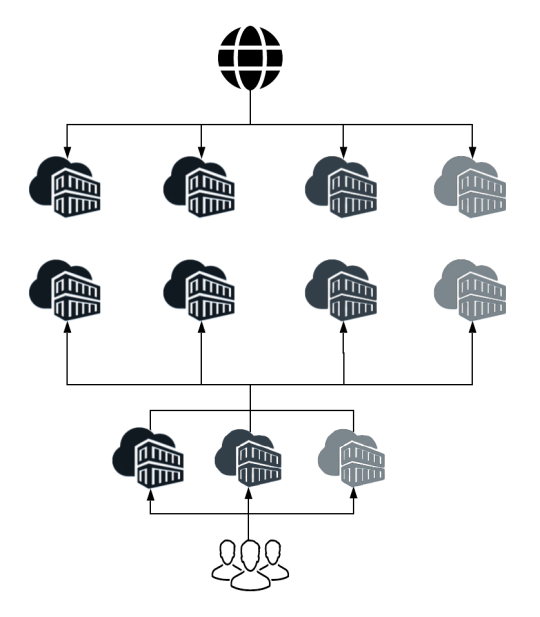
AEM as a Cloud Service is based on the use of an orchestration engine.Dynamically scales each of the service instances as per the actual needs; both scaling up or down as appropriate.
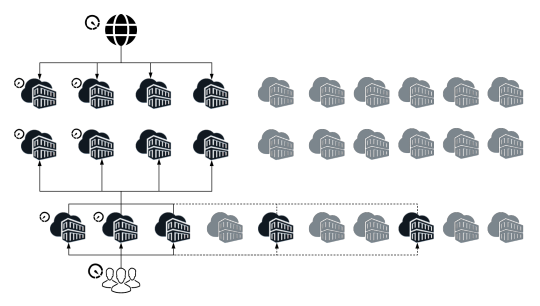
Scaling is a very simple task in AWS with creating separate Amazon Machine Images(AMIs) for publish , publish-dispatcher and author- dispatcher instance.
Use an AMI
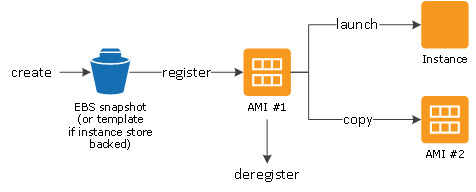
Three separate launch configurations can be created using these AMIs and included in separate Auto Scaling groups(Auto Scaling groups - Amazon EC2 Auto Scaling).
AWS Lambda can provide scaling logic for scale up/down events from Auto Scaling groups.
Scaling logic consists of pairing/unpairing the newly launched dispatcher instance to an available publish instance or vice versa, updating the replication agent (reverse replication, if applicable) between the newly launched publish and author, and updating AEM content health check alarms.
One more approach for the quicker startup and synchronization, AEM installation can place on a separate EBS volume. A frequent snapshots of the volume and attachment to the newly-launched instances, Cut-down need of replicate large amounts of author data. Also it ensure the latest content.
CDN:-Content Delivery Network or Content Distribution Network
A CDN is a group of geographically distributed and interconnected servers. They provide cached internet content from a network location closest to a user to speed up its delivery.
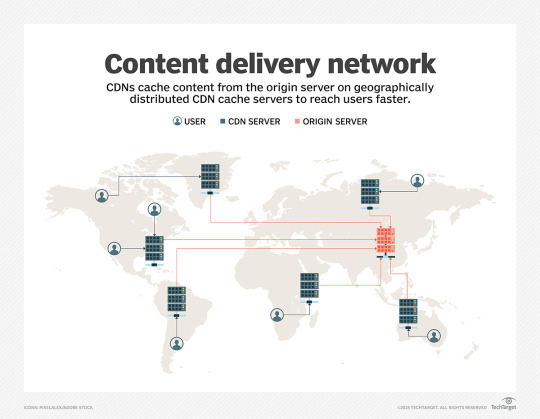
AWS is having answer of CDN requirement as well in the form of Amazon CloudFront a Low-Latency Content Delivery Network (CDN)
How it works
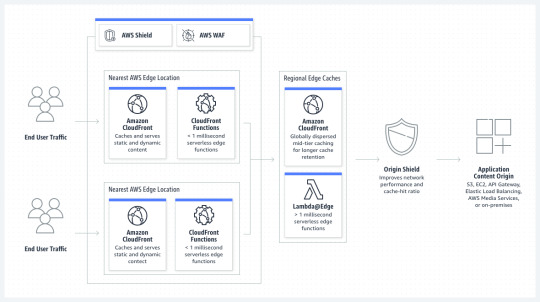
It will act as an additional caching layer with AEM dispatcher. Also it require proper content invalidation when it refreshed.
Explicit configuration of duration of particular resources are held in the CloudFront cache, expiration and cache-control headers sent by dispatcher required to control caching into CloudFront .
Cache control headers controlled by using mod_expires Apache Module.
Another approach will be API-based invalidation a custom invalidation workflow and set up an AEM Replication Agent that will use your own ContentBuilder and TransportHandler to invalidate the Amazon CloudFront cache using API.
These all about caching of static content only what is the solution or way to handle Dynamic content will see now.
Content which is Dynamic in Nature
Dispatcher is the key element of caching layer with the AEM. But it will not give full benefit when complete page is not cacheable. Now the question arise how dynamic content can fit into page without breaking the caching feature. There are some standard suggestion available. Like Edge Side Includes (ESIs),client-side JavaScript or Server Side Includes (SSIs) incorporate dynamic elements in a static page.
AWS is also have one solution as Varnish(replacing the dispatcher) to handle ESIs . But its not recommended by Adobe.
Till here we have seen structure of content dynamic static and various ways, but digital solution also have huge number of Assets mainly binary data. These need to configure handle properly to ensure performance of the site.
Again AWS is equipped with great solution called Amazon S3.
AEM Data Store with Amazon S3
Adobe Experience Manager (AEM), binary data can be stored independently from the content nodes. The binary data is stored in a data store, whereas content nodes are stored in a node store.
Both data stores and node stores can be configured using OSGi configuration. Each OSGi configuration is referenced using a persistent identifier (PID).
AEM can be configured to store data in Amazon’s Simple Storage Service (S3), with following PID for configuration
org.apache.jackrabbit.oak.plugins.blob.datastore.S3DataStore.config
To enable the S3 data store functionality, a feature pack containing the S3 Datastore Connector must be downloaded and installed. For more detail please refer Configuring node stores and data stores in AEM 6 | Adobe Experience Manager
This will simplifying management and backups. Also, sharing of binary data store across author and between author & publish instances will be possible and easier task with AWS S3 solution. it will reduce overall storage and data transfer requirements.
Already this great combination walkthroug of the structure combination posibbilities , we will see one more variation available for the Cloud version of AEM with AWS in next (AEM OpenCloud)
Thanks for being with me till this , we will meet in next part with some amazing journey of OpenClode.
Hope you enjoy most till this part, kindly keep your blessings and love to motivate me.
Continue............
#aem#aws#adobe#cloud#wcm#programing#ELB#Amzon S3#OpenClode#OSGi#SSIs#ESI#CloudFront#Datastore#connector#Dispatcher#API#ContentBuilder#TransportHandler#CDN#AWS Lambda#aws lambda#Amazon EC2 Auto Scaling#ASG Auto Scaling Group#Amazon Machine Images(AMIs)#AEM AUTHOR#AEM Publish
1 note
·
View note
Link
An AEM author can also flush the dispatcher caching from the AEM interface. Check this wonderful feature of ACS-commons.
0 notes
Text
Use Apache Bench for a Quick Test of AEM
Apache Bench is useful for quick and dirty tests of AEM. It is especially useful for testing the capacity of your load-balancer/Dispatcher tier.
For Windows, download Apache HTTP Server (64-bit) from Apache Lounge. Apache Bench will be available in the /bin folder. You can use ab.exe, or abs.exe for HTTPS requests.
The following command will send 20,000 GET requests at a concurrent user level of 400:
abs -r -k -n 20000 -c 400 -H "Accept-Encoding: gzip,deflate" https://stage.test.com/content/en.html
Use the 95th percentile value (reported in milliseconds) for decision making.
The following will upload a JPEG image to DAM at /content/dam/adobetest:
abs -A aemuser:password -n 1 -c 1 -u D:\Photos\IMG_9332.jpg -T image/jpeg https://stage.test.com/content/dam/adobetest/IMG_9332.jpg
2 notes
·
View notes
Text
Optimize author experience and author performance in AEM
Optimize author experience and author performance in AEM
Problem statement: How to improve the authoring experience in AEM using SDI? Can I optimize page load time? Can I cache all experience fragments on the pages in AEM? Introduction: The purpose of the module presented here is to replace dynamically generated components (eg. current time or foreign exchange rates) with server-side include tags (eg. SSI or ESI). Therefore, the dispatcher is able…

View On WordPress
0 notes
Text
Customize Error pages on AEM Author
AEM comes with a standard error page handling, and error handling in AEM is one of the most basic task. But 99% error handling is done for AEM sites, which we also call published/live pages. In order to handle error for sites there are multiple approaches like ACS commons Error Page Handler or one can handle the error at dispatcher level itself and can leverage dispatcher caching.But recently i…
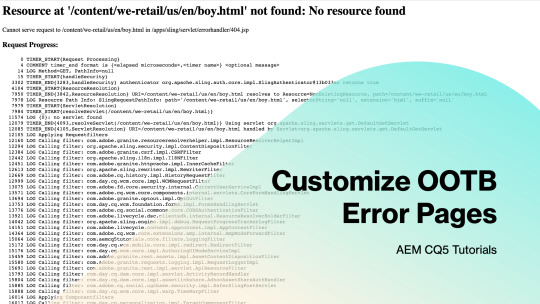
View On WordPress
0 notes
Text
Build your career with AEM Author Training
We Are Providing Online AEM Author Training You Can Attend FREE DEMO Classes! Experience the Quality Of Our Training. We Have a Pool of Expert Trainers worldwide on all the Technologies to Train the Students. We offering Training services to Major IT giants and to Individual Students Worldwide.
About Our faculty:
We have Excellent AEM Author instructor who have real time experience plus expert Orientation in Online Training.
About AEM Author Training :
AEM Author training by techsolidity imparts you with all practical content authoring skills and makes you an expert. This program can be fully customized and delivered based on your unique learning needs. Our certified instructor will teach you basic to advanced content author concepts which include author basics, installation, DAM, navigation, templates, components, creating edit pages, content & experience fragments, workflows, dispatcher, etc. This instructor-led course will give you the complete knowledge required to author content on the AEM platform.
Along with Training, We offer you:
Interactive Learning at Learners convenience
Industry Savvy Trainers
Real Time Methodologies
Topic wise Hands-on / Topic wise Study Material
24/7 system access
Best Practices /Example Case Studies
Support after Training a. Resume Preparation b. Certification Guidance c. Interview assistance
Recorded versions of sessions
About Techsolidity :
Techsolidity is an emerging e-learning platform that offers a wide range of upskilling programs worldwide. We design and develop learning modules for corporates and individuals that enable them to achieve considerable growth in their careers.
For any further assistance please contact below phone numbers and mail-id's @ 24/7
Contact us :
Techsolidity +91 8341166233 [email protected]
1 note
·
View note
Text
AEM TRAINING
Accelerate your career growth by joining experts designed AEM course offered by Course Drill. Our certified trainer will help you become a pro in designing content management solutions for websites, mobile applications, paperless forms and online communities. In this training, you will gain in-depth knowledge of the areas such as AEM architecture, components, JCR, Clint Libs, OSGI, Dispatcher and much more. During this AEM course, you will work with projects and prepare for clearing the AEM exam. Learn from the real-time experts by joining Course Drill’s AEM online training.
0 notes
Text
AEM Dispatcher
What is AEM Dispatcher?
Get In Touch
AEM Dispatcher is a web server module (provided by Adobe) that sits in front of an AEM instance and caches and delivers content to users. It acts as a proxy server that intercepts requests to AEM and serves cached content whenever possible. AEM Dispatcher can be used to cache both static and dynamic content, and it uses a set of rules and configurations to determine when to serve cached content and when to forward requests to AEM.
Key benefits of using AEM Dispatcher:
Improved performance: AEM Dispatcher reduces the load on the AEM instance by caching and serving content from the cache.
Reduced server load: By serving content from the cache, AEM Dispatcher reduces the load on the AEM server, allowing it to handle more requests and users.
Better security: AEM Dispatcher can be configured to provide an additional layer of security for AEM by blocking harmful requests and limiting access to certain resources.
Scalability: AEM Dispatcher can be used to distribute content across multiple servers, making it easier to scale AEM for large-scale deployments.
How AEM Dispatcher works:
AEM Dispatcher works by intercepting requests to AEM and checking whether the requested content is in the cache. If the content is in the cache, AEM Dispatcher serves it directly to the user.
If the content is not in the cache, AEM Dispatcher forwards the request to AEM, which generates the content and sends it back to AEM Dispatcher.
AEM Dispatcher then caches the content and serves it to the user. AEM Dispatcher uses a set of rules and configurations to determine when to serve cached content and when to forward requests to AEM.
Dispatcher setup for AEM as a cloud service in linux/mac using docker
Prerequisites for Dispatcher Setup
Apache 2.2 web server
Dispatcher Module
Docker setup in local
Installation Instructions
Install Apache web server
Run this command to install the apache package on ubuntu
sudo apt install apache2 -y
Install Docker
Run this command to install the latest docker package on ubuntu
sudo apt-get install docker-ce docker-ce-cli containerd.io docker-buildx-plugin docker-compose-plugin
For Verify docker was installed correctly, Run this comman
docker --version
Execute
aem-sdk-dispatcher-tools-<version>-unix.sh
Run this command to execute script
chmod +x <fileName>
sudo ./<fileName>
Validate the Dispatcher configuration contained in this SDK
$ sudo ./bin/validator full -d out src
This validates the configuration and generates deployment information in out
Validate the deployment information by the Dispatcher in a docker image
$ sudo ./bin/docker_run.sh out localhost:4503 test
This will start the container, run Apache in configuration test mode (httpd -t), dump processed dispatcher. any config (-D DUMP_ANY) and exit.
Confirm that no immutable config file was changed against a docker image ones
$ sudo ./bin/docker_immutability_check.sh src
With your AEM publish server running on your computer, listening on port 4503, you can start the dispatcher in front of that server as follows:
$ sudo ./bin/docker_run.sh out host.docker.internal:4503 8888
Sometimes, You may encounter this error “Waiting until host.docker.internal is available”, to resolve this use your host ip
bin/docker_run.sh src <HOST IP>:4503 8888
Read more!!
0 notes
Text
AEM Dispatcher Configuration
One of the issues with Vanity URLs in AEM is that you want to tell dispatcher they exist. I as of late found that in AEM 6.3+ this is consequently dealt with, as distributers have an element they can use to tell the dispatcher a rundown of substantial vanity URLs naturally. Of course, Geode utilizes different dispatcher strings to deal with area occasions at the same time in a door shipper line for dispersion between locales, or in an offbeat occasion line for circulating occasions for compose behind reserving. With sequential lines, you can likewise design the requesting strategy for dispatching those occasions.
Of course, an entryway source line or offbeat occasion line utilizes 5 dispatcher strings for every line. This offers help for applications that can cycle lined occasions simultaneously for appropriation to another Geode site or audience. Assuming your application doesn't need simultaneous appropriation, or on the other hand on the off chance that you need more assets to help the necessities of various dispatcher strings, then, at that point, you can design a solitary dispatcher string to handle a line.
Arranging the Ordering Policy for Serial Queues
When utilizing various dispatcher-strings (more prominent than 1) with a sequential occasion line, you can likewise arrange the request strategy that those strings use to disperse occasions from the line. The legitimate request strategy esteems are:
key (default). All updates to a similar key are appropriated all together. Geode jam key requesting by setting all updates to a similar key in a similar dispatcher string line. You regularly utilize key requesting when updates to passages have no relationship to one another, for example, for an application that utilizes a solitary feeder to disseminate stock updates to a few different frameworks. string. All district refreshes from a given string are disseminated all together. Geode jam string requesting by putting all district refreshes from a similar string into a similar aem dispatcher configuration string line. By and large, use string requesting when updates to one locale section influence updates to another area passage. parcel. All district occasions that share a similar apportioning key are circulated all together. Indicate parcel requesting when applications utilize a PartitionResolver to execute custom apportioning. With parcel requesting, all sections that share something similar "dividing key" (RoutingObject) are set into a similar dispatcher string line.
0 notes
Text
Configuration of dispatcher in aem
Dispatcher is aem’s storing as well as burden adjusting instrument. This Puppet module will work with the design and the board of Adobe Dispatcher modules in your framework. It can design the module and quite a few ranches definitions in a straightforward and effective way.
Dispatcher module effects:
1. Module configuration file
2. Farm configuration file
Requirements for setup:-
Since the dispatcher module relies upon the Apache module, that module should be remembered for the index, any other way a blunder will be raised.
This module will arrange the dispatcher, yet the module should be given by the shopper. Guarantee that the Dispatcher module is made accessible inside the list.
Usage:-
Dispatcher Configuration
Indicating Farms to Load from Hiera
Dispatcher Loading to VirtualHosts
Characterizing a Farm
Getting a Farm
SELinux Docroot Support
0 notes
Text
Amazon Web Service & Adobe Experience Manager:- A Journey together (Part-2)
In the fist part we discussed how one day digital market leader meet with the a friend AWS in the Cloud and become very popular pair. Also what gift they bring for the digital marketing persons.
Now AEM asked to come to my home.
So AEM insides about its parts and structure explored.
AEM Platform :
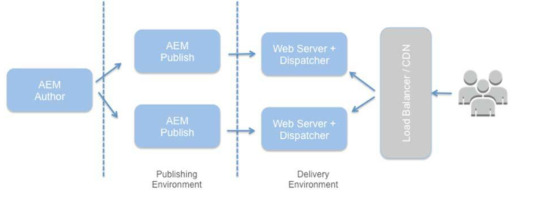
AUTHOR:-
The content and layout of an AEM experience are created and managed in the author environment. It offers features for authoring content modifications, reviewing them, and publishing the approved versions of the content to the publish environment.
PUBLISH:-
The audience receives the experience from publishing environment. With the option to customize the experience based on demographics or targeted messaging, it renders the actual pages.
Both AUTHOR and PUBLISH instances are Java web applications that have identical installed software. They are differentiated by configuration only.
DISPATCHER:-
Dispatcher environment is the responsible for caching (storing) content and Load balancing.Helps realize a fast & dynamic web authoring environment.
Mainly dispatcher works as part of HTTP server like Apache HTTP. It store as much as possible static content according to specified rules.
So end user feel faster accessing of content and reducing load of PUBLISH. The dispatcher places the cached documents in the document root of the web server.
How AEM Store Content in Repository:-
AEM is storing data without any discrimination as it treated all the family member (data) are content only . Its following philosophy of "everything is content" and stored in the same house(Repository).
Its called CRX i.e. implementation of JCR coming from parent Content Repository API for Java and Apache Jackrabbit Oak.
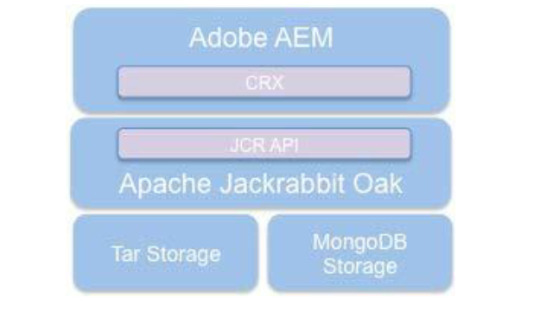
The basement(base) of the building is driven by MK MicroKernels as in the picture its Tar or MongoDB. The Oak storage layer provides an abstraction layer for the actual storage of the content. MK act as driver or persistence layer here. two way of storing content , TAR MK and MongoDB MK.
TAR--> tar files-->segments
The Tar storage uses tar files. It stores the content as various types of records within larger segments. Journals are used to track the latest state of the repository.
MongoDB-->MongoDB database-->node
MongoDB storage leverages its sharding and clustering feature. The repository tree is stored in one MongoDB database where each node is a separate document.
Tar MicroKernel (TarMK)--for-->Performance
MongoDB--for-->scalability
For Publish instances, its always recommended to go with TarMK.
In more than one Publish instance each running on its own Tar MK then this combination is called TarMK Farm. This is the default deployment for publish environments.
Author instance is having freedom to go with either TAR or MongoDB. it depends on the requirement, if its performance oriented and limited number then it can go with the TarMK but if it require more scalable instances then it would go with the MongoDB. TarMK for a single author instance or MongoDB when horizontal scaling.
Now story of TarMK with Author, a cold standby TarMK instance can be configured in another availability zone to provide backup as fail-over.
TarMK is the default persistence system in AEM for both instances, but it can go with different persistent manger (MongoDB).
Gift of TarMK:-performance-optimized,for typical JCR use cases and is very fast, uses an industry-standard data format, can quickly and easily backed up, high performance and reliable data storage, minimal operational overhead and lower total cost of ownership (TCO).
Now story of MongoDB it basically come into picture when more hands required, means more user/author (more than
1,000 users/day, 100 concurrent users)and high volumes of page edits required. To accommodate these horizontal scalability required and solution is with MongoDB. It leverage MongoDB features like high availability, redundancy and automated fail-overs.
MongoDB MK can give lower performance in some scenario as its establish external connection with MongoDB.
A minimum deployment with MongoDB typically involves a
MongoDB replica consisting of
1)one primary node
2)two secondary nodes,
with each node running in its separate availability zone.
AEM--store--binary data--into ---data store.
AEM--store--content data--into ---node store.
And both stored independently.
Amazon Simple Storage Service (Amazon S3) is best high performant option for shared datastore between publish and author instances to store binary files(Assets like image etc).
Continue....
3 notes
·
View notes
Text
Dispatcher configuration in aem
What characterizes an "ideal" Adobe Experience Manager (AEM) Dispatcher arrangement? Also if there truly is something like this, why not simply print it here instead of this post? Even better, keep anybody from really designing the Dispatcher by any stretch of the imagination, and just help the ideal setup!Sadly, it's not exactly that straightforward. While the specific property estimations, number of ranches and vhosts, and substance of the/channel set will shift between each AEM execution, there exists a typical arrangement of objectives which all ideal Dispatcher arrangements look to accomplish. At an undeniable level, an ideal arrangement will:
Boost the reserve hit proportion of the public confronting siteDiminish the effect of startling or vindictive solicitationsLimit the impact of enactments on the substance of the reserveAt Adobe, we've been chipping away at an apparatus to assist you with upgrading your utilization of the Dispatcher in quest for these 3 objectives. In this post I'll acquaint you with the AEM Dispatcher configuration Optimizer Tool, or DOT for short.
0 notes